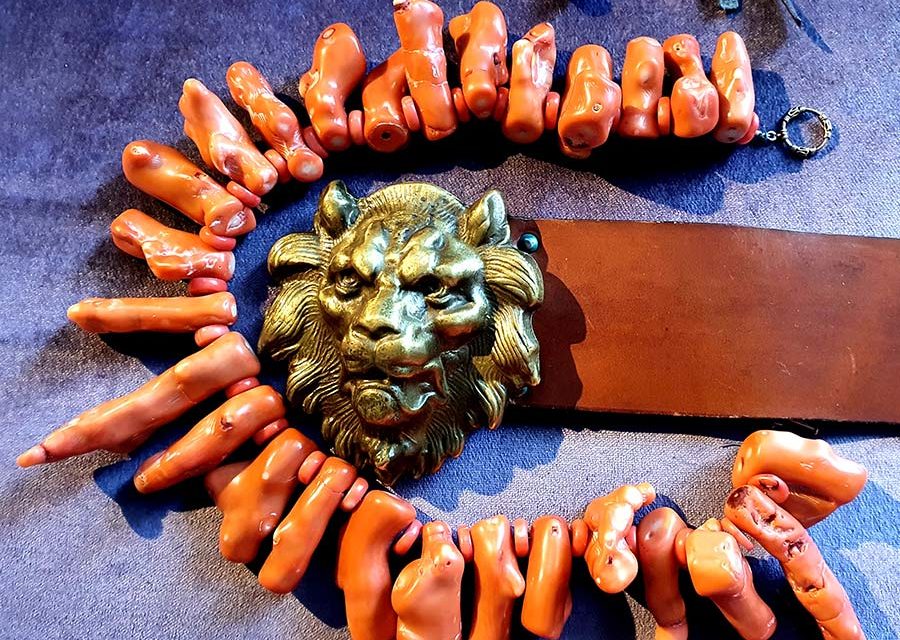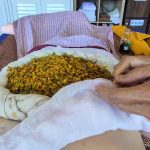How to recognize true red Italian coral beads from imitations? Italian red coral is expensive. The larger the imperfections, the price goes up. But fake sellers will recreate these sizes and colours. So just because it is expensive does not mean it is real.
So here are the four top it’s to identify true Italian red coral. How do I recognize true red coral jewellery and necklace from imitation?
You can listen to my interview with Marco Jovon, a third-generation Italian expert on Coral. He has a boutique on Rialto Bridge in Venice, called Italian Cameos Handmade Jewellery
“We share cause we care – Marco Jovon “

I am wearing Malaysian bamboo coral bought in Venice, on the Rialto bridge.
Imperfections Are Real Italian Coral
Look carefully at the little balls of a necklace, the pearl must have imperfections!
Real Coral is not perfect, plastic is!
Rough coral resembles a transversally cut tree that shows the concentric circles of repeated settlements.
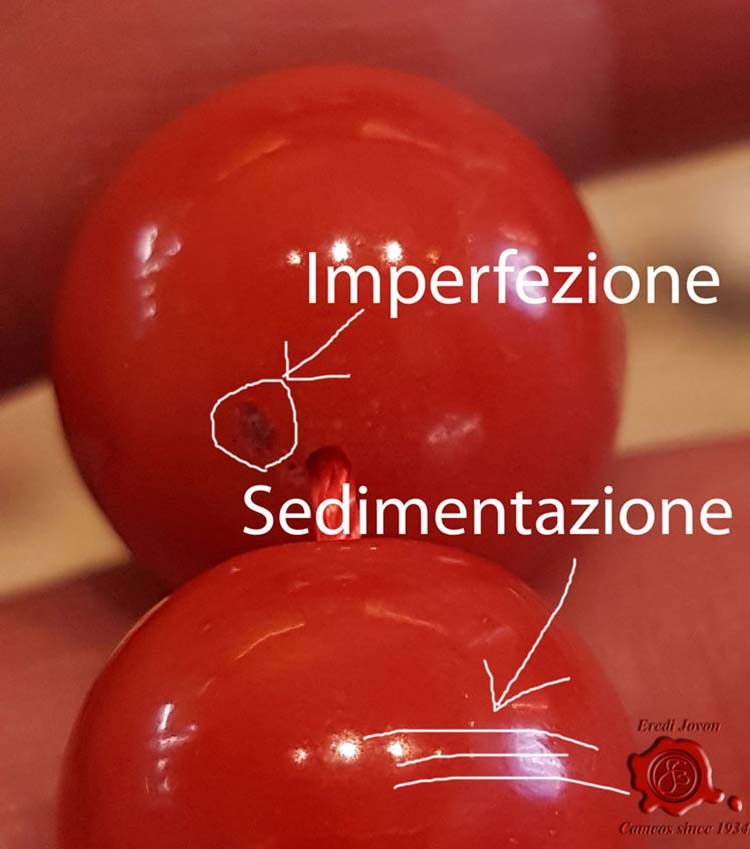
Italian Horn Jewellery
Italian horn jewellery is shown for example in the typical amulet of Cornicello. The common shape is curly (but coral specialists can workpieces to make them look straight.
The only plastic is perfect but it “smells” of plastic and fake: like every imitation.
The famous Cornicello is from Sicily.
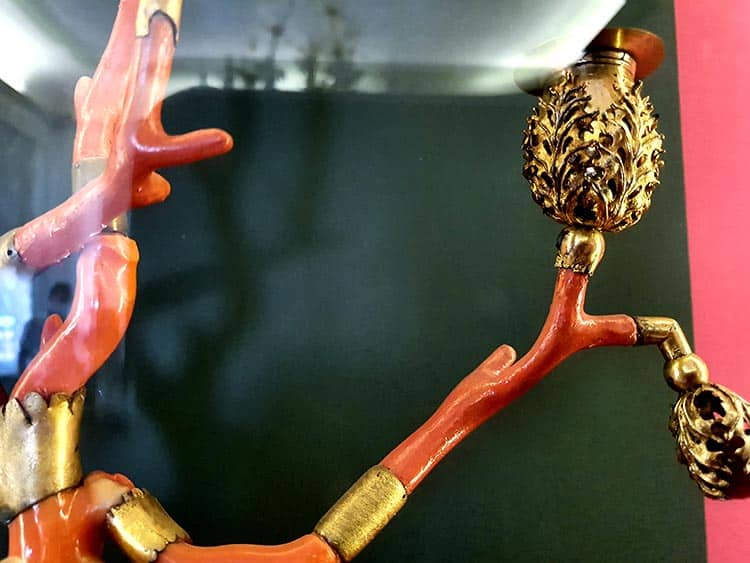
This is in Scuola De Saint Rocco in Venice. Where much real Italian coral was used for church purposes.
Pink Japanese Coral
The most frequently asked question, is red coral more valuable than pink coral?
How to distinguish the Italian red coral necklace from the Japanese one. Japanese coral always has a white spot that you can easily spot in some corners of the jewel simply by turning it around.
It is not a fault but a characteristic of all coral “elatius”.
Japanese coral is non-transcendental, but it is simply not the “corallium rubrum” so it’s not the red Italian one. It is pinker and can be used for carving faces in it. That is the main difference between the two.

This pink Japanese coral gold vintage necklace is retailed at over 4000euro. The windows display of Italian and Japanese coral in Venice on the Rialto bridge.
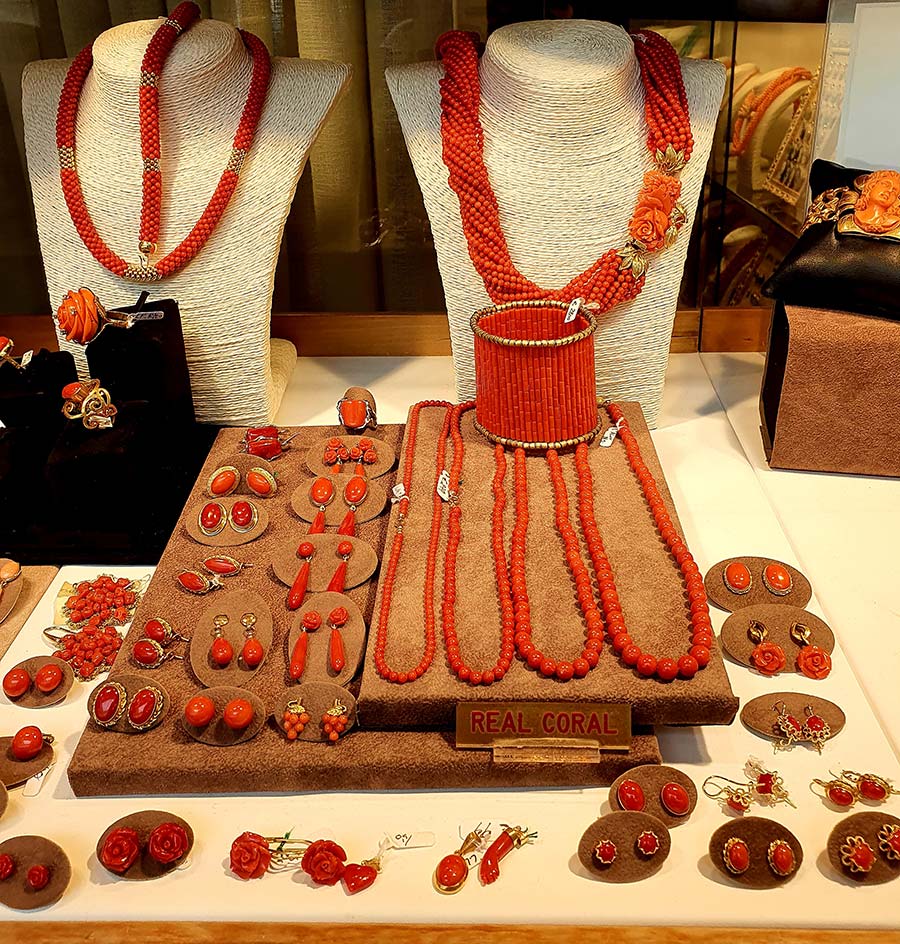
Your New Coral Italian Ring?
If you own a new or vintage red coral ring? Turn the ring upside down and look on the back. Can you see a white spot that looks like a vein? Don’t worry you got a real coral ring in great quality but simply not Italian, not to say it is not 99% Made in Italy as well.
Coral Imperfections
It’s a living organism, so think about it? How can it be in perfect shape? If you do not notice any imperfections but only a glossy surface, then you are in the presence of coloured glass or the most well-known “coral paste”.
The latter is nothing but an agglomerate, a resin, which has really little or no coral at all. As usual, this must be declared and, in the case, sold as such.
Look at the hole in the ball (where the thread passes) and here, if you can see a colour that is obviously different from the rest of the pearl, you will be in the presence of the famous dyed coral, or coral bamboo.
A coralloid that is dyed with sophisticated techniques so as to make it really look like the coral of Sardinia or Torre del Greco.
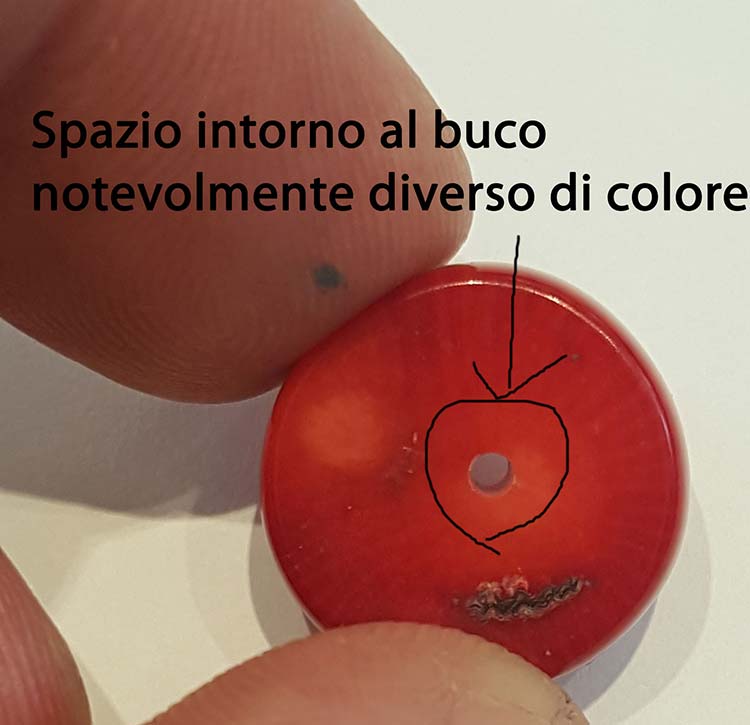
Coral Malaysian Bamboo
I bought on the Rialto Bridge in Venice, what I thought was a fake coral.
Mediterranean coral is not extremely red (think of its very expensive antique varieties picked up in Sciacca from 1875 which is actually orange.
Colourful necklaces that tend to be a “strawberry” red. The cost of this coral should not be very high.
Bamboo coral is dyed with unnatural colours to make it easily recognizable from a genuine Italian red coral beads necklace.
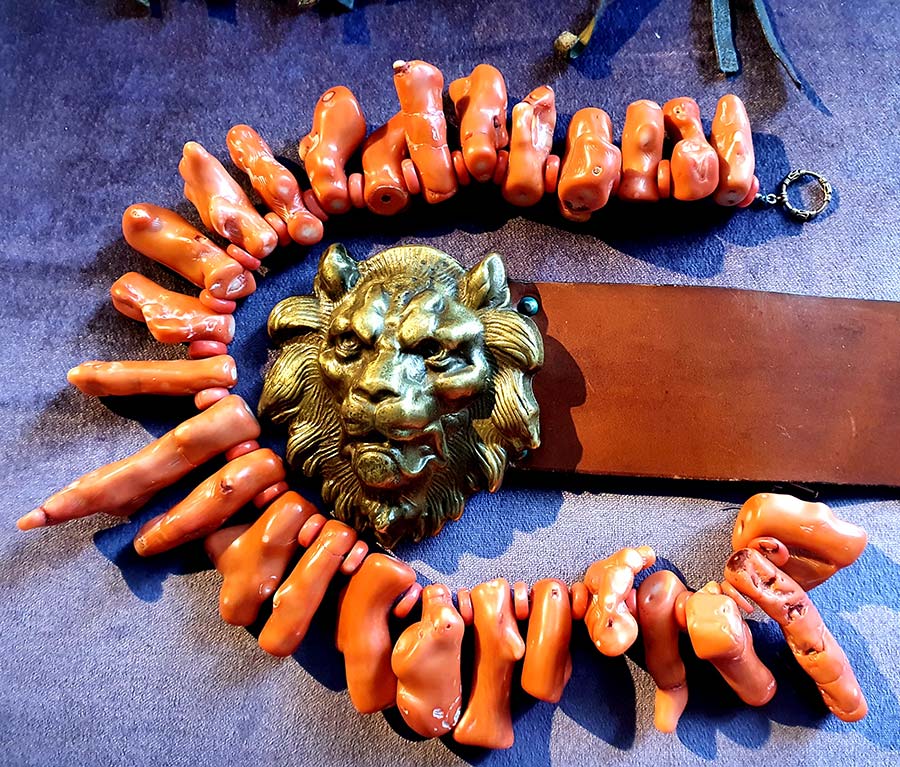
You can not buy a Ferrari at a cost of an Audi R8. Therefore bamboo coral must be declared and sold as such. In my case, it was not sold with a certificate. But to be honest it was tucked away in a draw and the shop owner had no idea of coral. I paid very little for it. This coral naturally came to me. It is mother nature speaking to me and my Italian heritage saying.
You must own real Italian coral? I know Eredi Jovon can help me with that in the future. I simply trust him. Trust must be earnt not bought.

This coral fake necklace was bought from a Spanish brand called Uterque. It’s glass for sure. Actually, I don’t know. It is in storage and once out of storage, I get expert Eredi Jovon, from Venice to tell me what it is.
With coral, it is like an Italian villa, what you think you are buying maybe not be the case. Do your research first.
Ask For A Guarantee
True Italian red coral is scientifically called “corallium rubrum”, this statement must be reported on the guarantee certificate which every real self-respected jeweller will be happy to provide you with.
Where to Buy Italian Coral
- Shop: Eredi Jovon
- Address: Ponte di Rialto, 5325, 30124 Venezia VE, Italy
- Website: www.eredijovon.com/en/

